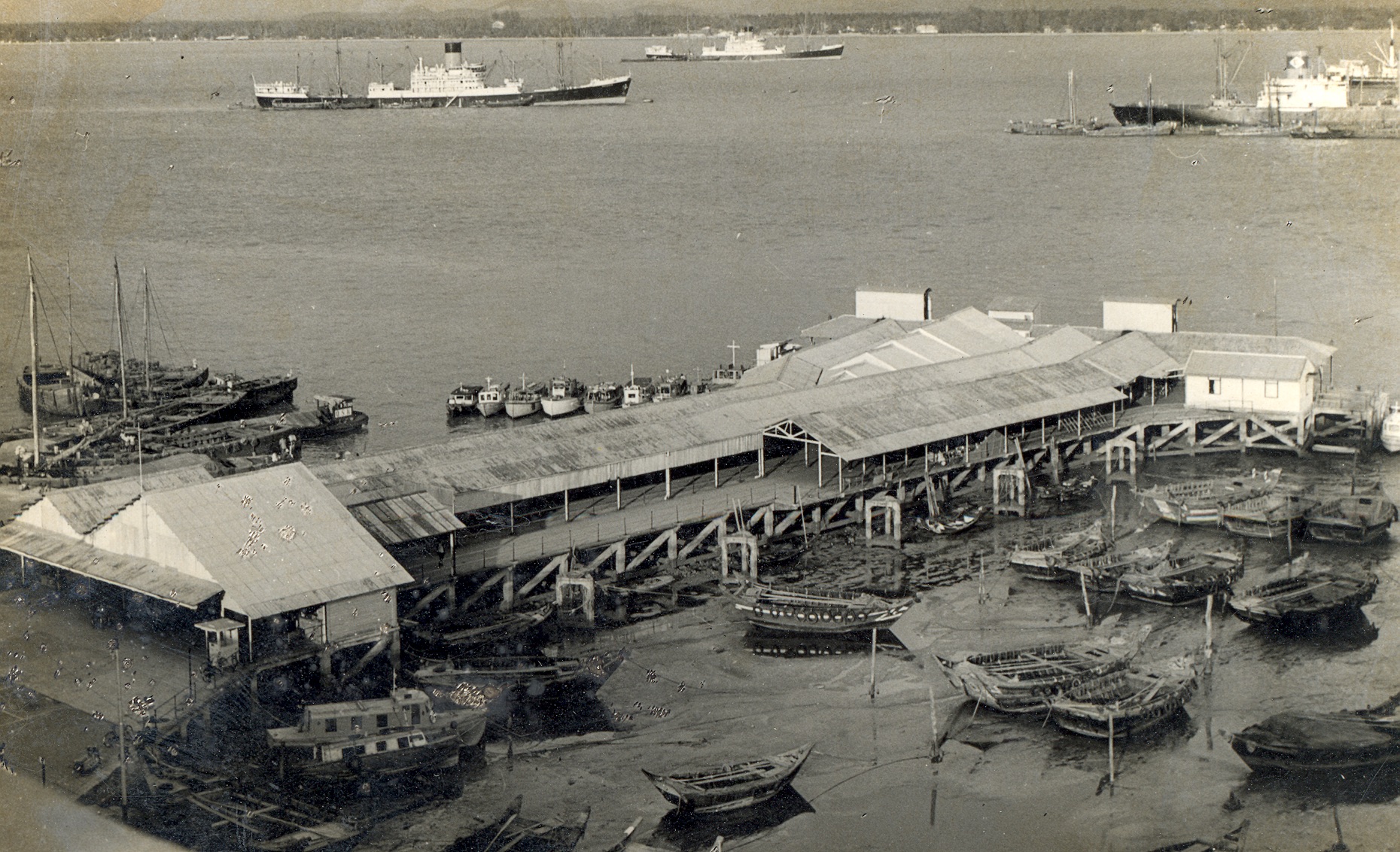Kek Lok Si’s first head monk potong his own manhood to save the temple

- 133Shares
- Facebook70
- Twitter8
- LinkedIn5
- Email10
- WhatsApp40
Kek Lok Si, as we’re sure you already know, is one of the most famous Buddhist temples in Malaysia. It’s also very popular with locals and tourists alike; with most of the temple’s Google reviews being 4 and 5 stars.

But underneath the shiny veneer of the house of worship, there’s a bit of dark history that you won’t find on its website nor its Wikipedia page. That’s right, Kek Lok Si’s first head monk, Beow Lean, potong-ed his own kukubird back in 1907, two years after the first phase of the temple’s construction had been completed.
Y’all would, understandably, have a few questions at this juncture. “Was that for real? Why did he do such a thing? Did he eventually succumb to this self-inflicted injury?” The incident was for real, according to Dr. Wu Lien-teh’s autobiography, The Plague Fighter. Before we get to the (his?) juicy bits, though, we gotta go back to the beginning. It all started when…
Beow Lean came to Penang to get donations for a temple in China

Before Beow Lean took up the mantle of head monk at Kek Lok Si, he was actually already leading the monks of Yongquan Temple in Fuzhou, China. He probably wouldn’t even have journeyed to Malaya if not for the fact that he needed money.
You see, Yongquan Temple was well-known in China, and even though it had a rich history spanning more than a thousand years, it was in a state of disrepair by the nineteenth century. As the temple’s abbot, Beow Lean knew he had to do something to help fix up the temple and started traveling to Taiwan and Southeast Asia in the late 1800s to look for donations. Against all odds, he managed to raise enough money to restore Yongquan Temple to its former glory, revitalize several over temples, and helped establish Nanshan temple in Zhangzhou. He didn’t stop there, though, and continued to seek donations in Southeast Asia.

That was when he arrived in Penang in 1885. During his stay in the Pearl of the Orient, Beow Lean was said to be so impressed by the devotion of the Chinese Penangites that he accepted an offer to be a resident monk at the island’s oldest temple, the Goddess of Mercy Temple in George Town. It was also around that time when Beow Lean discovered a ‘hilly site in Ayer Itam’ that he thought was perfect for a temple:
“(Beow Lean’s) training and artistic temperament enabled him to grasp at once the possibilities of constructing an immense temple amid the gorgeous scenery after the style of the famous Kusan (Yongquan) monastery, where he received his initiation as a priest” – Dr. Wu Lien-teh in The Plague Fighter
So, he would do what he seemed to do best: solicit donations. And wouldn’t you know it…
Much of the donations for Kek Lok Si’s construction came from dr*gs and alcohol

According to Dr. Wu Lien-teh, Penang was ‘full of women of leisure and wealth’ back then. These ladies had, supposedly, received a load of inheritance from their husbands/parents/relatives, and didn’t have to work. That didn’t mean they spent that money like spoiled tai tais, though. No, no, they invested heavily in opium farms and alcohol distilleries, and through intermarriage with other wealthy families, they became stinkin’ rich.
In their old age, the wealthy women became more and more interested in religion, especially Buddhism, and Beow Lean, knowing this, approached them for donations, which they happily obliged. Of course, there were donations from other sources as well, but the emphasis given to these women in Dr. Wu’s autobiography suggests that they contributed heavily to Kek Lok Si’s Kickstarter fund.
When half of the $500,000 (it’s not clear which currency this was) target was met, Beow Lean gave the green light for the commencement of Kek Lok Si’s construction, and all told, the project went without a hitch:
“For five years, tier after tier of most picturesque Chinese architecture made its appearance upon the undulations of the once thickly wooded slopes, resulting in a structure which never failed to arouse the admiration…” – Dr. Wu Lien-teh in The Plague Fighter
And while everything was calm on that front…
Rumors of orgies and secret tunnels were spread about Kek Lok Si

As the temple was completed in 1905, word was that orgies were being organized at Kek Lok Si, and there were secret tunnels under the monastery being used for ‘vicious purposes’. Needless to say, none of it was true – Dr. Wu Lien-teh believed that the rumors came from the jealous management of ‘less popular places of worship’.
Beow Lean, the poor guy, endured the slander for two years, until… he simply couldn’t anymore. Late one night in 1907, Dr. Wu Lien-teh got a call from a novice monk at the Kek Lok Si asking him to get to the temple stat cuz the abbot was bleeding profusely. Dr. Wu didn’t hesitate and set off for Kek Lok Si immediately. The doctor and Beow Lean, now the temple’s head monk, were friends on account on Dr. Wu’s wife being able to speak the same Chinese dialect.
After an hour’s journey in a horse drawn carriage, Dr. Wu arrived at the temple to find Beow Lean in his dark room, lit only by candlelight. There was blood. Lots of it. It just so happened that…
Kek Lok Si’s head monk lopped off his own genitals with a ‘vegetable chopper’

Following two years of silence, all the verbal venom finally got to Beow Lean, and he chopped off his genitalia in a ‘moment of desperation’. The act, Dr. Wu theorized, was taken from ‘Chinese religious traditions’ and was more worthy of honor compared to unaliving oneself.
“But that any man could possess sufficient courage and strength of will to inflict severe pain on himself, surpasses anything I have ever read, whether fact or fiction” – Dr. Wu Lien-teh in The Plague Fighter
Anyway, back to the situation at hand – the two men’s eyes met, and without a word, the doctor started administering emergency medical care to the monk. Stopping Beow Lean’s bleeding, relieving his excruciating pain, and making sure he could pee properly. All that took Dr. Wu a couple of hours, but that was really just first aid to make sure Beow Lean survived the night.
Over the month, the doctor visited Beow Lean daily to clean and dress the latter’s wound, and eventually, Kek Lok Si’s first head monk right as rain. And out of respect for the venerable abbot, Dr. Wu didn’t charge Beow Lean a single cent for his services. There’s not much we could find about Beow Lean’s life after this – all we know is that he did eventually return to Fuzhou, China.
And honestly, we’re not sure if Beow Lean’s act of sacrifice did anything for Kek Lok Si’s reputation, but from Dr. Wu’s writings, the monk seemed generally well-loved, and the rumors did little to derail Kek Lok Si’s eventual rise to prominence in Penang. And that’s pretty much it for the story. Big shout out to Dr. Wu for his autobiography, The Plague Fighter, which you can buy here, and kudos to Beow Lean for showing his haters that society didn’t have him by the balls.
- 133Shares
- Facebook70
- Twitter8
- LinkedIn5
- Email10
- WhatsApp40



